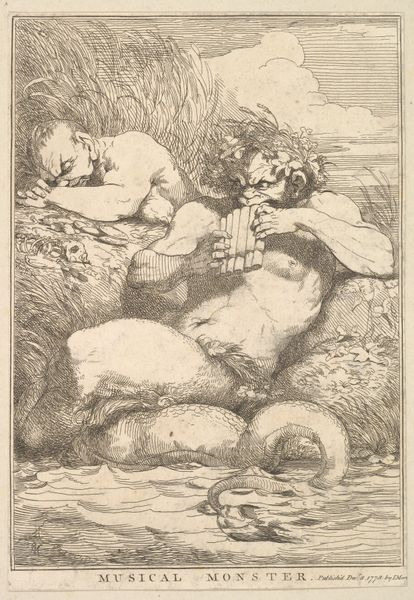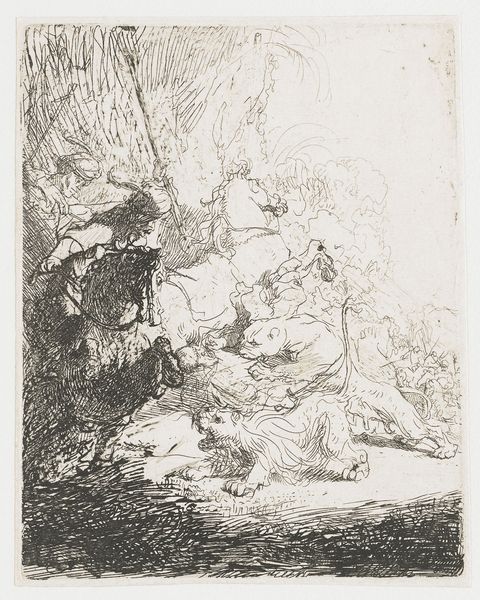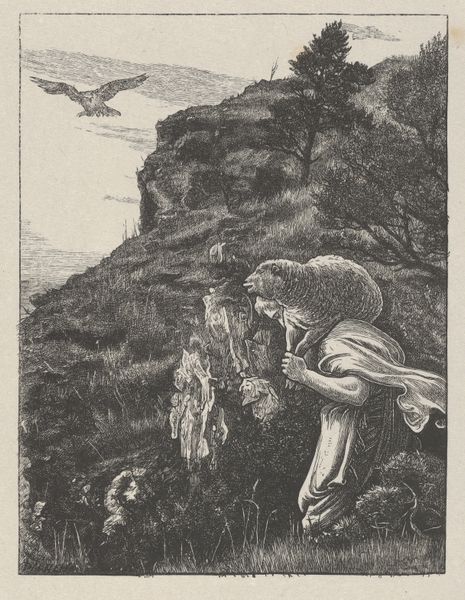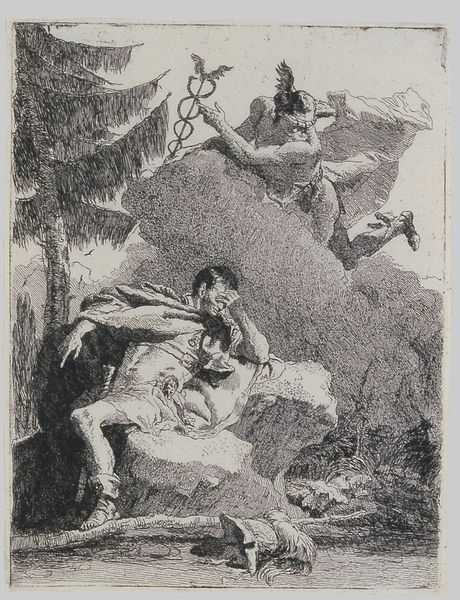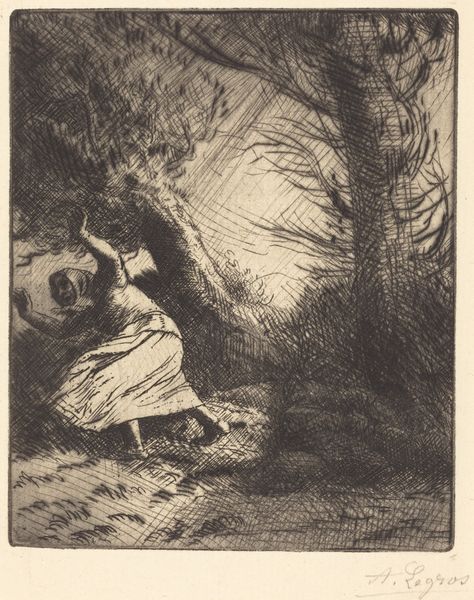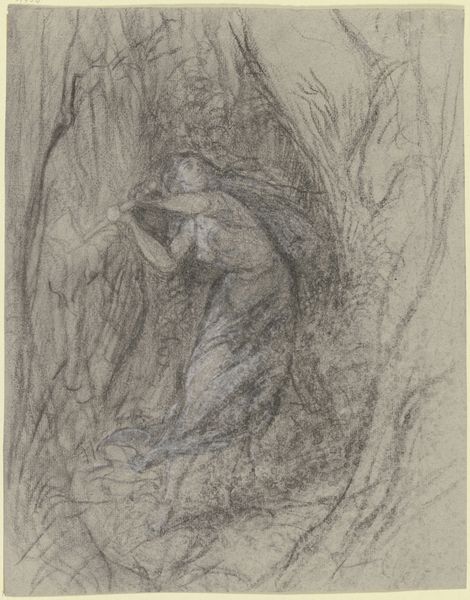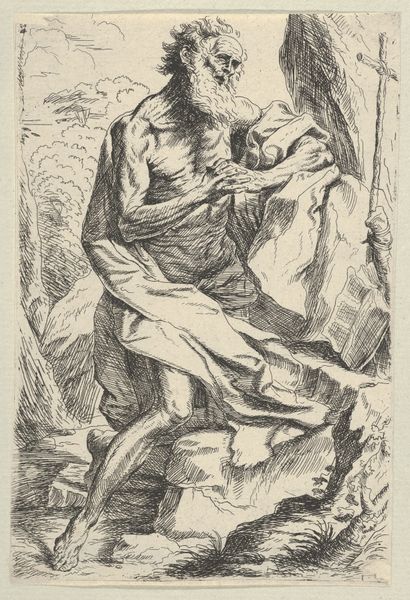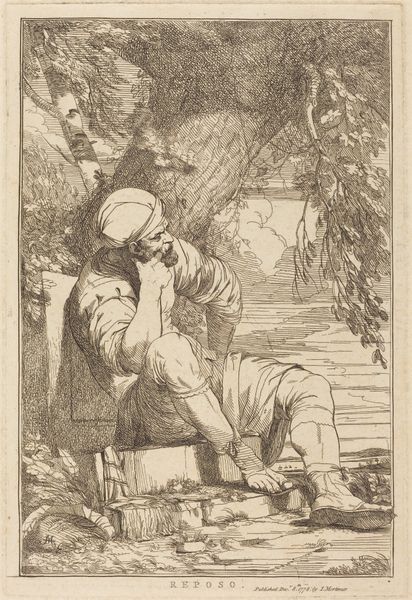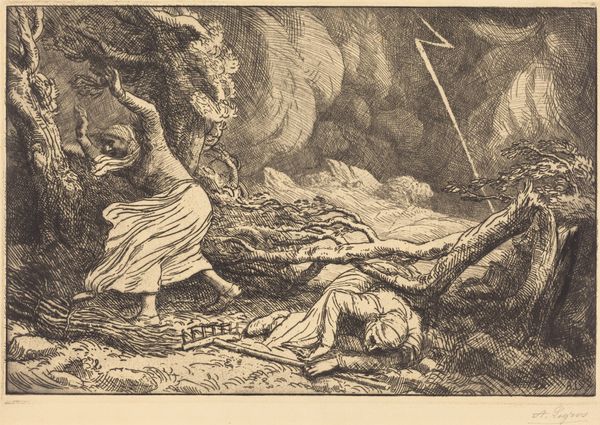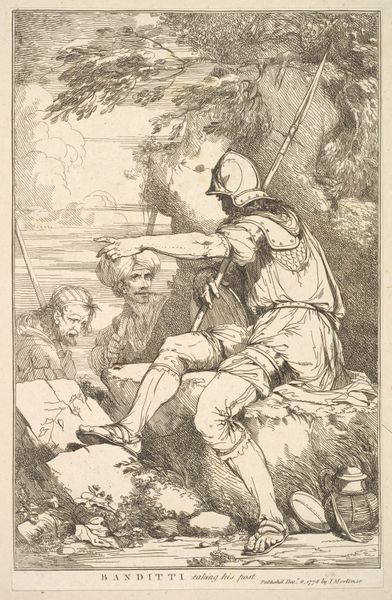
Elegy, from "Fifteen Etchings Dedicated to Sir Joshua Reynolds" 1778
0:00
0:00
Dimensions: Sheet: 11 3/8 x 7 5/16 in. (28.9 x 18.5 cm)
Copyright: Public Domain
Curator: At first glance, it's rather somber, isn't it? Almost funereal. Editor: Indeed. Let's delve into this evocative print. We are looking at "Elegy, from Fifteen Etchings Dedicated to Sir Joshua Reynolds," created in 1778 by John Hamilton Mortimer, currently held at the Metropolitan Museum of Art. Mortimer was known for his dramatic history paintings and powerful figure drawings. Curator: You know, my initial reaction is drawn to the etched lines themselves. The density, the deliberate angling – it creates a real sense of dramatic, almost theatrical light. One has to consider the labour that went into the physical carving of the copper plate itself. How was Mortimer’s studio structured? Editor: A crucial question. And equally important is the content—the iconography speaks volumes. Look at the mourning woman perched on the rocks, overlooking the bodies in the water. She evokes classic images of grief and lament. The stream carries away more than just bodies, the stream of history, loss. Curator: You know, thinking of the etched medium brings up considerations of access and distribution. These prints were designed for circulation. Who was consuming this image, and how did the experience of possessing it contribute to shaping aesthetic and political perspectives? Reynolds would have been influential, to whom this was dedicated, but to whom else? Editor: Reynolds certainly influenced the image through a discourse of symbolic form and value. He becomes yet another face in this history lesson! Consider her headwear -- feathers of some kind. Its relationship with classical depictions of tragic figures seems evident. We see repeated imagery related to mortality in many of Mortimer’s images, actually. Curator: Precisely. The choice of Reynolds is more than flattery. He shaped the artistic marketplace itself! And mortality, a reminder that all material production, like our physical bodies, has a lifecycle. How were these works archived, protected, and made present to the culture over time? Editor: A compelling connection. The work resonates even now—grief remains a universal experience. Though separated from Mortimer's cultural milieu by centuries, the weight of sorrow carries through this symbolic language of bereavement, this water of loss. The composition echoes across cultural and temporal divides. Curator: It shows us something so important. A material reality to making art which has been preserved and is available now! Even as we focus on that human element, that resonance. That connection back through history that makes that art live now. Editor: Precisely, an intersection where art speaks profoundly across time about material processes, lasting human emotions and symbolic meanings.
Comments
No comments
Be the first to comment and join the conversation on the ultimate creative platform.
